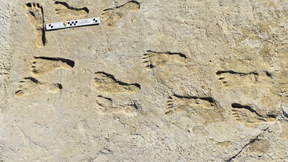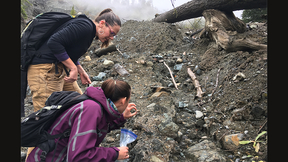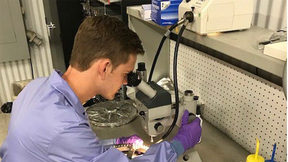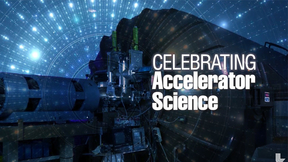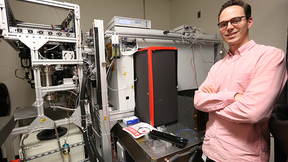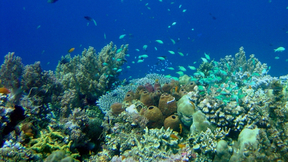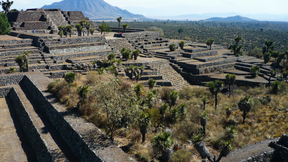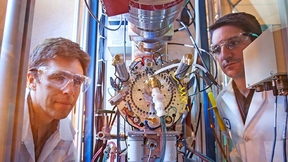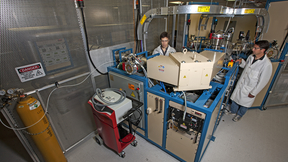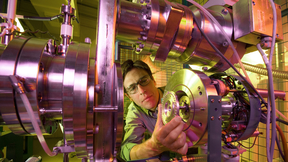Back
Center for Accelerator Mass Spectrometry
Becoming a nuclear scientist: LLNL traineeship inspires SJSU students
Historically, most undergraduate students in STEM are limited in their exposure to the field of nuclear science. This is especially true at minority-serving institutions, which often do not have the infrastructure, resources and technical support needed to maintain such courses. To broaden the nuclear science pipeline and establish an equitable and inclusive workforce that…
Tropical forests feel the burn of climate change
Tropical forests account for more than 50% of the global terrestrial carbon sink, but climate change threatens to alter the carbon balance of these ecosystems. New research by Lawrence Livermore National Laboratory (LLNL) scientists and colleagues from Colorado State University and the Smithsonian Tropical Research Institute found that warming and drying of tropical forest…
Greenland ice sheet melted in recent past
Greenland was once actually green — even if it was close to a million years ago. But its lack of an ice sheet back then may lead to clues about the increased risk of sea-level rise in a warmer future. A new study provides the first direct evidence that the center, not just the edges, of Greenland’s ice sheet melted away in the recent geological past and the now-ice-covered…
Livermore’s research involvement in 23-year-old cold case
When local law enforcement are unable to identify skeletal remains, they may seek out external resources and capabilities like those at Lawrence Livermore National Laboratory’s (LLNL) Center for Accelerator Mass Spectrometry (CAMS). That’s exactly what happened in 2007 when police from Newfoundland, Canada, were six years into an investigation with nothing but dead ends…
Study confirms age of oldest fossil human footprints in North America
New research reaffirms that human footprints found in White Sands National Park, New Mexico, date to the Last Glacial Maximum, placing humans in North America thousands of years earlier than once thought. In September 2021, U.S. Geological Survey researchers and an international team of scientists announced that ancient human footprints discovered in White Sands National…
A rock hard technique to harvest atmospheric CO2
Carbonate minerals are formed when carbon dioxide reacts with magnesium and calcium-rich rocks. But where does that CO2 come from? If it comes from the atmosphere, this process at sufficient scale may be able to reliably draw down atmospheric greenhouse gas levels, according to new research by Lawrence Livermore National Laboratory (LLNL) scientists. The research appears…
Long-term coastal cliff loss due to climate change
The dangers of coastal erosion are an all-too-familiar reality for the modern residents of California’s iconic mountainous coastal communities. With a new tool, researchers are now bringing historical perspective to the topic of how to manage these disappearing coastlines. Using a model that incorporates measurements of the amount of time coastal cliffs and their remnant…
Environmental DNA uncovers a 2-million-year-old ecosystem in Greenland
Around 2 million years ago, climate in Greenland resembled the forecast of a future under global warming: with trees such as poplars and birch and animals like hare, lemmings, mastodons and reindeer. Paleoclimatic records show strong polar amplification with annual temperatures of 11–19 degrees Celsius above current values. The biological communities inhabiting the Arctic…
Nerve-Agent Antidote Shows Great Potential
Scientists at LLNL’s Forensic Science Center and Biosecurity Center have formulated molecule LLNL-02, the first molecule capable of dual protection against nerve agents.
S&TR Preview: Celebrating Accelerator Science
Livermore’s Center for Accelerator Mass Spectrometry celebrates a milestone anniversary with a broad range of research endeavors. Read more about it in this month's issue of Science & Technology Review (S&TR): str.llnl.gov.
Renowned Accelerator Facility Turns 30
Livermore’s Center for Accelerator Mass Spectrometry celebrates a milestone anniversary with a broad range of research endeavors.
Biomedical Technology Accelerates into ‘Science on Saturday’ Program
Lawrence Livermore National Laboratory’s (LLNL’s) educational outreach program Science on Saturday returned in February for a season of Marvelous Machines. Held annually at the Bankhead Theater in downtown Livermore, the lecture series offers local students and the public a peek into LLNL’s recent research. In a February 10 presentation titled “Biomedical Accelerator Mass…
Alan Hidy's global travels lead to a CAMS career
The bookcase in Alan Hidy’s office is loaded with carefully labeled bags of rocks -- some the size of a fist, others pulverized into dust. The granite in these bags is destined for isotope ratio measurement at Lawrence Livermore National Laboratory's Center for Accelerator Mass Spectrometry (CAMS). "These are from the Sierras," Hidy said, referring to his ongoing study of…
Laser tracks therapeutics, nutrients, toxins
Lawrence Livermore National Laboratory (LLNL) researchers have developed a laser-based tabletop device to measure carbon-14 (radiocarbon). In biological systems, carbon-14 (14C ) can be used as a biochemical tracer to track micro-doses of nutrients, toxins and therapeutics in humans and animals. For example, the 14C can be tacked on to a vitamin. When a human ingests the…
New measurements of oceanic organic matter help scientists in understanding of climate
Researchers have found that new measurements of the size, age and composition of organic matter in the Pacific Ocean affects short-term and long-term climate impacts. The findings could have implications for climate in terms of how long organic matter is stored in the ocean before being converted into CO2 and re-entering the atmosphere. Marine organic matter is one of…
Lawrence Livermore research finds early Mesoamericans affected by climate change
Scientists have reconstructed the past climate for the region around Cantona, a large fortified city in highland Mexico, and found the population drastically declined in the past, at least in part because of climate change.The research appears in the online edition of the Proceedings of the National Academy of Sciences for the week of Jan. 26.Lawrence Livermore researcher…
Lab, UC Davis partner to personalize cancer medications
Buoyed by several dramatic advances, Lawrence Livermore National Laboratory scientists think they can tackle biological science in a way that couldn't be done before.Over the past two years, Lab researchers have expedited accelerator mass spectrometer sample preparation and analysis time from days to minutes and moved a complex scientific process requiring accelerator…
Biological sample prep time cut dramatically -- from days to minutes
When Lawrence Livermore National Laboratory researchers invented the field of biological accelerator mass spectrometry (AMS) in the late 1980s, the process of preparing the samples was time-consuming and cumbersome. Physicists and biomedical researchers used torches, vacuum lines, special chemistries and high degrees of skill to convert biological samples into graphite…
Biological Mysteries Decoded with Radiocarbon Dating
Using bomb-pulse dating, Livermore researchers help solve cold cases and clear up mysteries about the human brain and eye.
Lawrence Livermore celebrates 25 years of carbon dating
From developing the first accelerator mass spectrometer for use in the biology field to tracking radionuclides from the Dai-ichi Nuclear Power Plant disaster, the Laboratory's Center for Accelerator Mass Spectrometry (CAMS) has spent 25 years in the spotlight of not only dating ancient artifacts but solving global challenges.CAMS is celebrating its 25th anniversary this…






